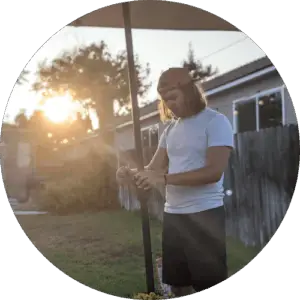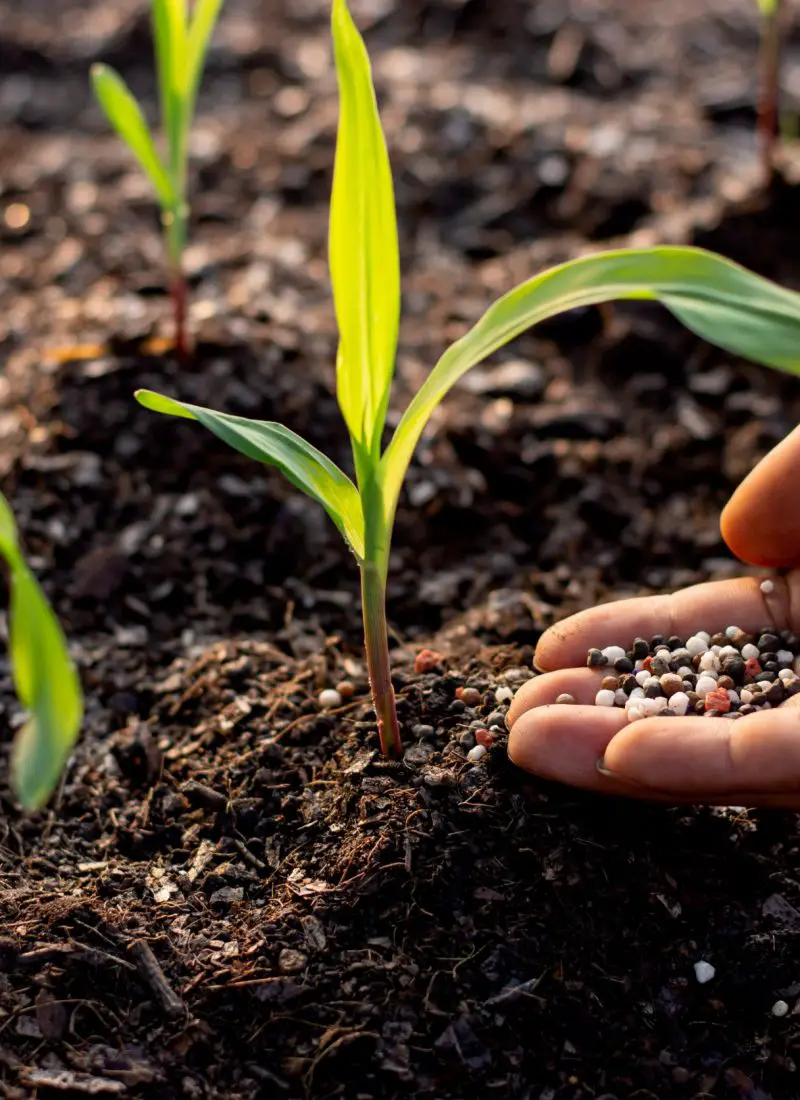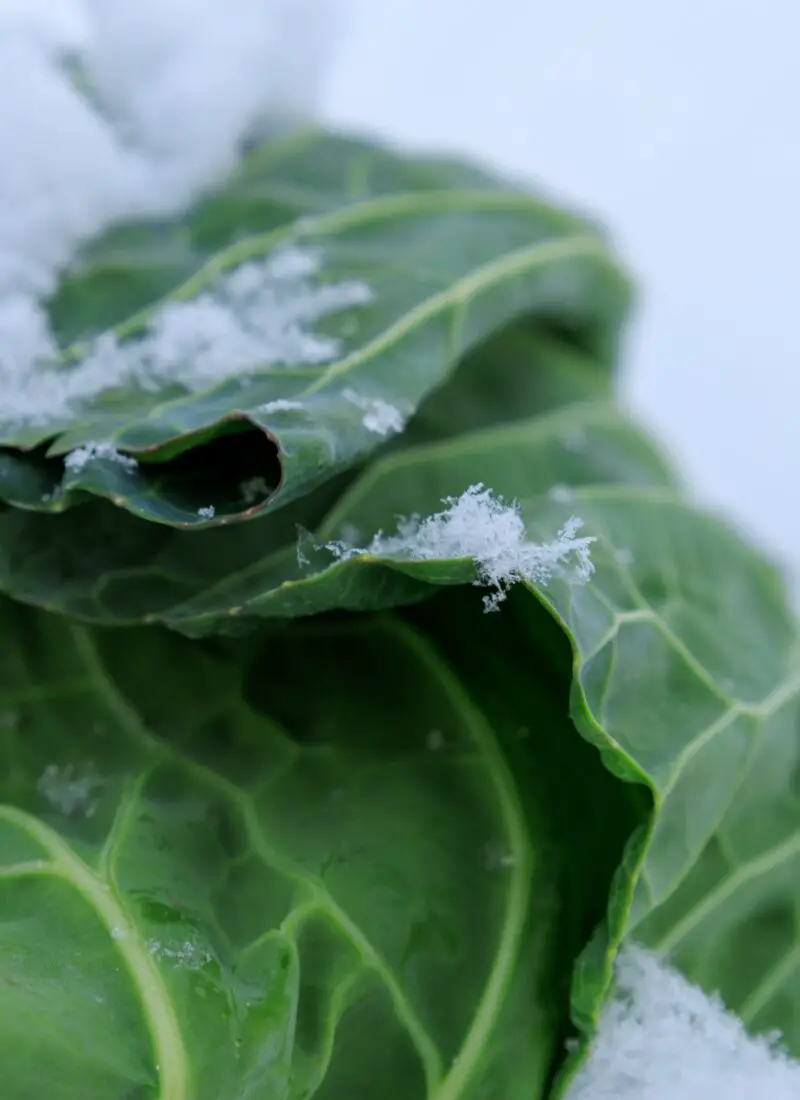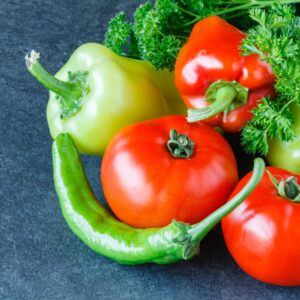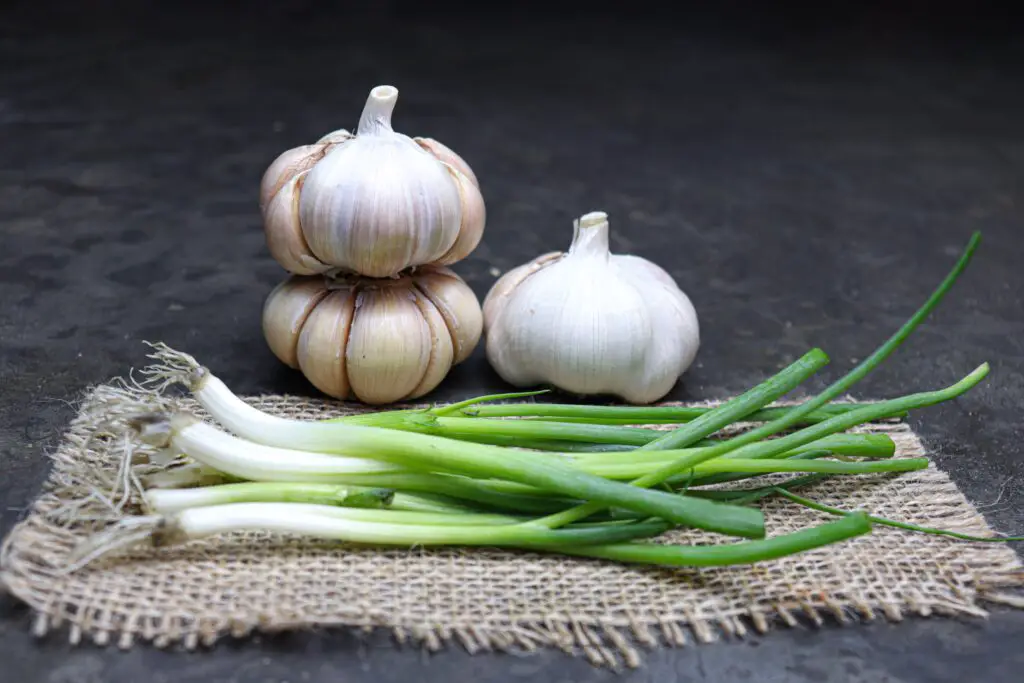
Living in a frost-free area such as in hardiness zone 13 is not something you’ll likely experience in the US. But if you live in a tropical place like this, that means you have all year to grow and harvest your favorite plants, especially perennials!
If you live in an area with different hardiness zones, the following articles may help you:
- The Top 10 Easy Perennial Vegetables to Plant
- 10 Best Perennial Vegetables That Will Thrive in Zone 3
- 10 Hardy Perennial Vegetables to Easily Grow in Zone 4
- 20 Best Perennial Vegetables to Grow in Zone 5 Easily
- 12 Best Perennial Vegetables to Plant in Zone 6
- 12 Perennial Vegetables To Grow Easily in Zone 7
- 10 Perennial Vegetables You Can Plant Easily in Zone 8
- 10 Unique Perennial Vegetables to Grow in Zone 9
- 10 Fascinating Perennial Vegetables to Grow in Zone 10
- 9 Perennial Vegetables You Need to Grow in Zone 11
- 9 Perennial Vegetables to Grow Easily in Zone 12
With a bit of maintenance and some shade fabric to keep the plant protected from the intense heat, here are 9 perennial vegetables you should grow in zone 13:
(As an Amazon Associate, I earn from qualifying purchases.)
Table of contents
- 1. Curry Tree (Murraya Koenigii)
- 2. Drumstick Tree/Moringa (Moringa Oleifera)
- 3. Fairy Spud (Claytonia Virginica)
- 4. Garlic (Allium Sativum)
- 5. Leeks (Allium Porrum)
- 6. New Zealand Spinach (Tetragonia Tetragonioides)
- 7. Purple Tree Collard (Brassica Oleracea var. viridis)
- 8. Roselle (Hibiscus Sabdariffa)
- 9. Sweet Potato (Ipomoea Batatas)
1. Curry Tree (Murraya Koenigii)
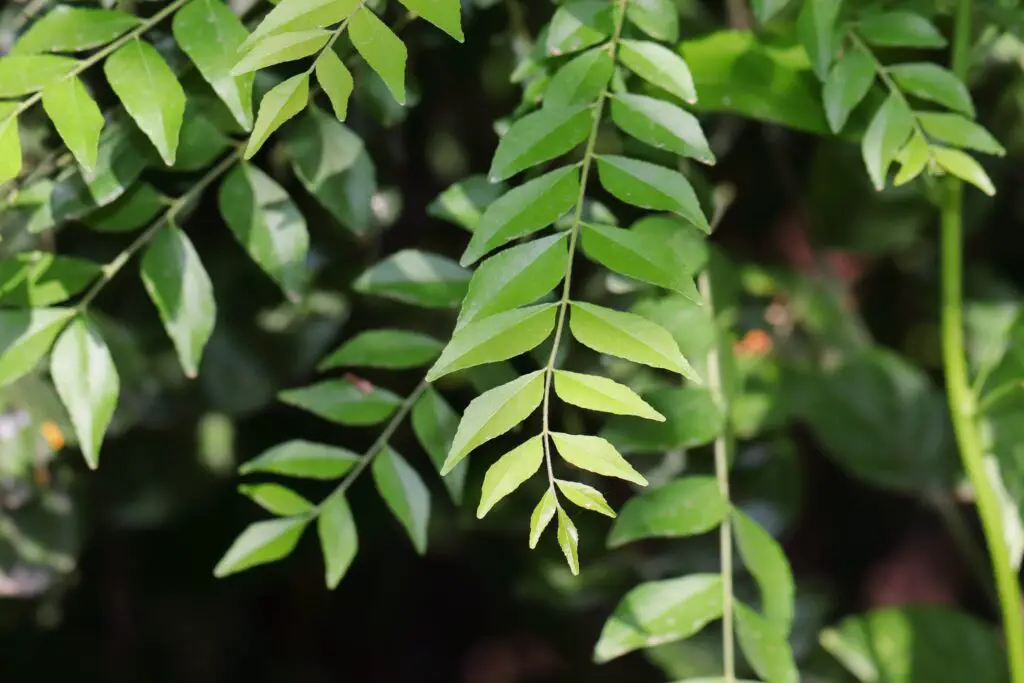
What are its basic care needs?
- Sun: 6 to 8 hours of direct sunlight.
- Soil: Well-draining soil filled with nutrients.
- Water: Weekly watering, after the soil’s surface dries out.
- Fertilizer: Yearly application of compost around the plant.
- Special Care:
- Grow this plant in a protected area where it can be shaded from strong wind.
- Remove flower buds before they bloom every year to redirect the tree’s energy to only growing the leaves.
- Prune off dead branches and leaves to constantly stimulate new growth.
Any precautions or notes on growing this vegetable? Harvest Curry tree leaves once the plant is established and cook/use them in dishes as you would with bay leaves.
2. Drumstick Tree/Moringa (Moringa Oleifera)
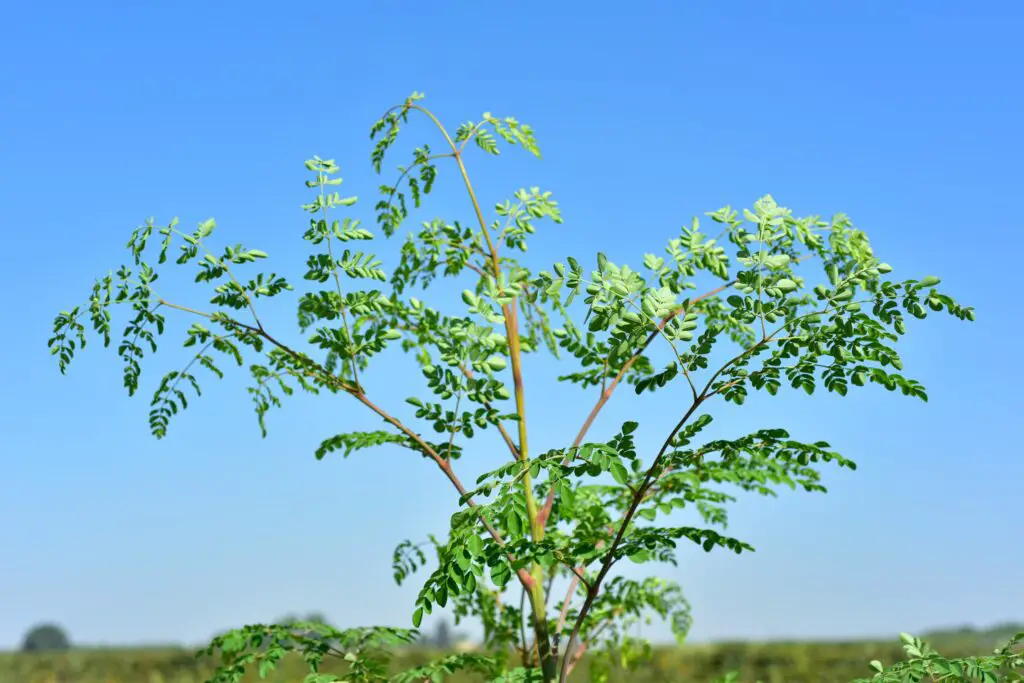
What are its basic care needs?
- Sun: 6 to 8 hours of direct sunlight.
- Soil: Well-draining, sandy soil.
- Water: Weekly watering, after the soil’s surface dries out.
- Fertilizer: Yearly application of compost around the plant.
- Special Care: Prune regularly to maintain the plant’s height at a manageable level for easier harvesting.
Any precautions or notes on growing this vegetable? Harvest Moringa leaves once the plant is established and cook them in dishes before consuming.
3. Fairy Spud (Claytonia Virginica)
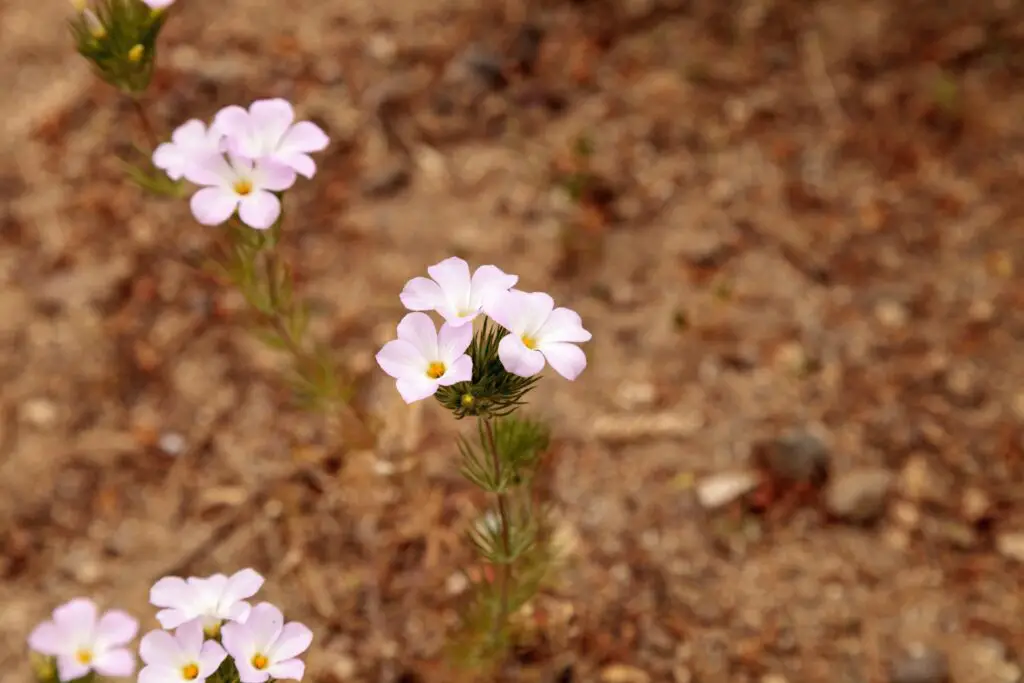
What are its basic care needs?
- Sun: 6 to 8 hours of indirect sunlight with some shade.
- Soil: Loose, well-draining soil filled with nutrients.
- Water: Weekly watering, after the soil’s surface dries out.
- Fertilizer: Yearly application of compost around the plant.
- Special Care: Restrict this plant in a container as it may become weedy in ideal growing conditions.
Any precautions or notes on growing this vegetable? Harvest Fairy Spud’s tubers after a year of planting when it is well-established. Leave some corms/tubers behind to grow again next year. Treat them like potatoes and cook them thoroughly before consumption.
4. Garlic (Allium Sativum)
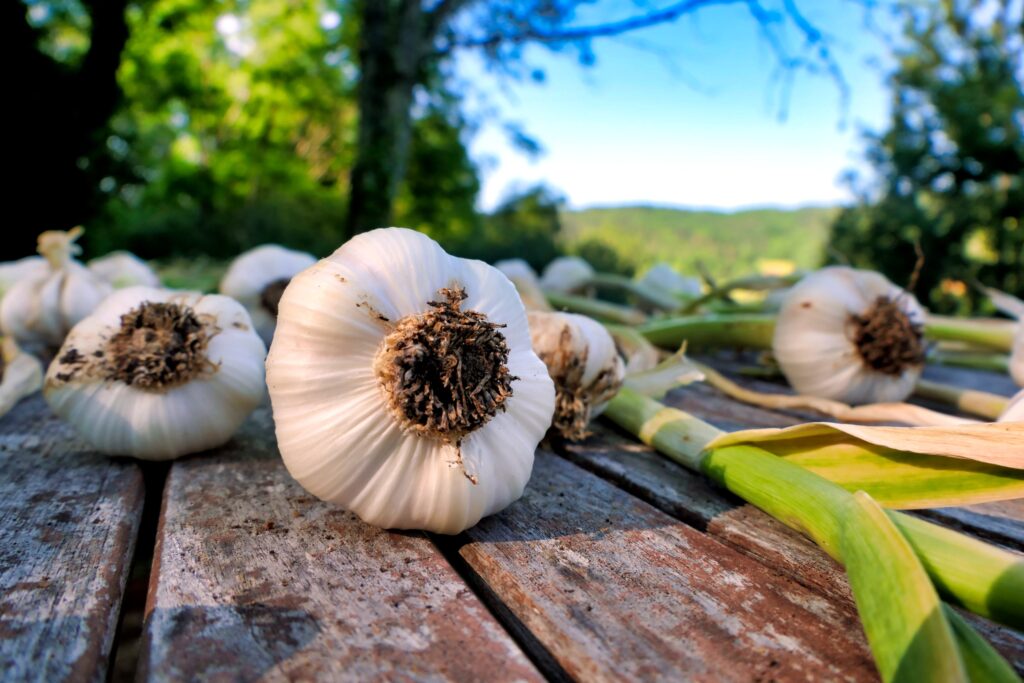
What are its basic care needs?
- Sun: 6 to 8 hours of direct sunlight.
- Soil: Loose, well-draining soil filled with nutrients.
- Water: Weekly watering, after the soil’s surface dries out. However, stop watering once the leaves start to wither.
- Fertilizer: Yearly application of compost around the plant. Alternatively, you can feed the plant with a high-Nitrogen fertilizer during planting and when the plant is about 4 to 6 inches tall.
- Special Care:
- Apply mulch around the plant to suppress weeds, keep the soil constantly moist and prevent temperature fluctuations.
- Choose softneck garlic cultivars as these do well in warmer climates. You can read the following articles to find out different varieties of garlic for your perusal:
Any precautions or notes on growing this vegetable?
- Harvest Garlic bulbs once half of the foliage turns brown, ensuring to dig them up gently with the shoots still attached. Leave some behind in the ground to regrow again the year after.
- Cure your Garlic bulbs in a cool and dry area, away from sunlight, for 3 to 4 weeks until the rest of the foliage dries up. By then, cut the shoots and roots off just close to the bulbs.
5. Leeks (Allium Porrum)
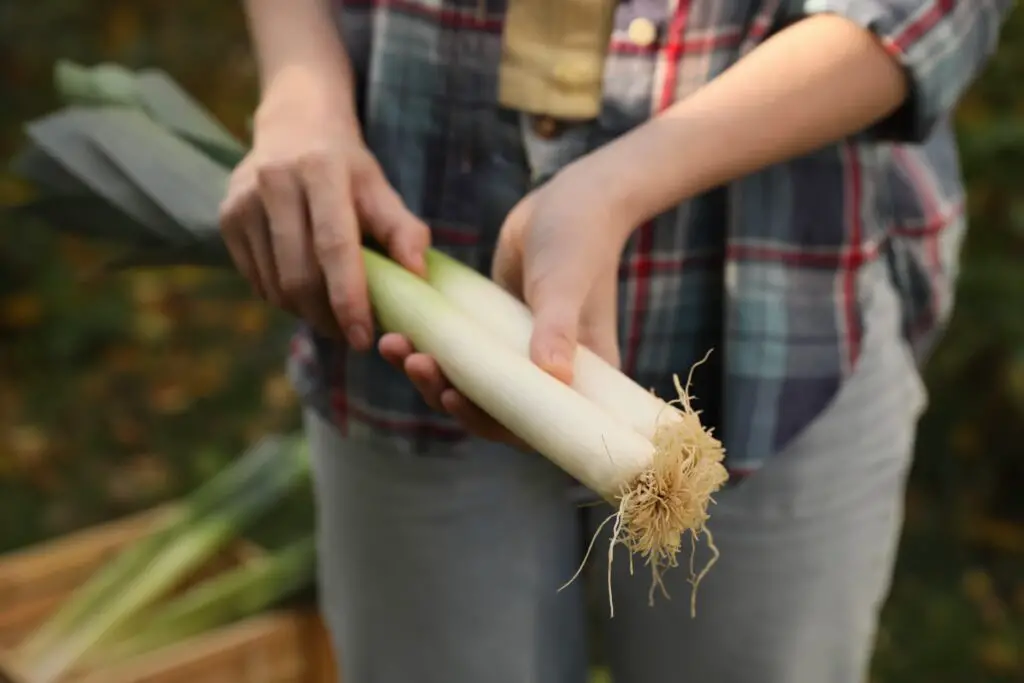
What are its basic care needs?
- Sun: 6 to 8 hours of direct sunlight.
- Soil: Loose, well-draining soil.
- Water: Weekly watering, after the soil’s surface dries out.
- Fertilizer: Yearly application of compost around the plant.
- Special Care:
- Don’t grow this plant near legumes as it may stunt their growth.
- For better stalk growth, cut the top half of the plant in summer.
Any precautions or notes on growing this vegetable? Harvest Leeks any time in a year once they are established, ensuring to leave some behind for next year’s growth.
6. New Zealand Spinach (Tetragonia Tetragonioides)
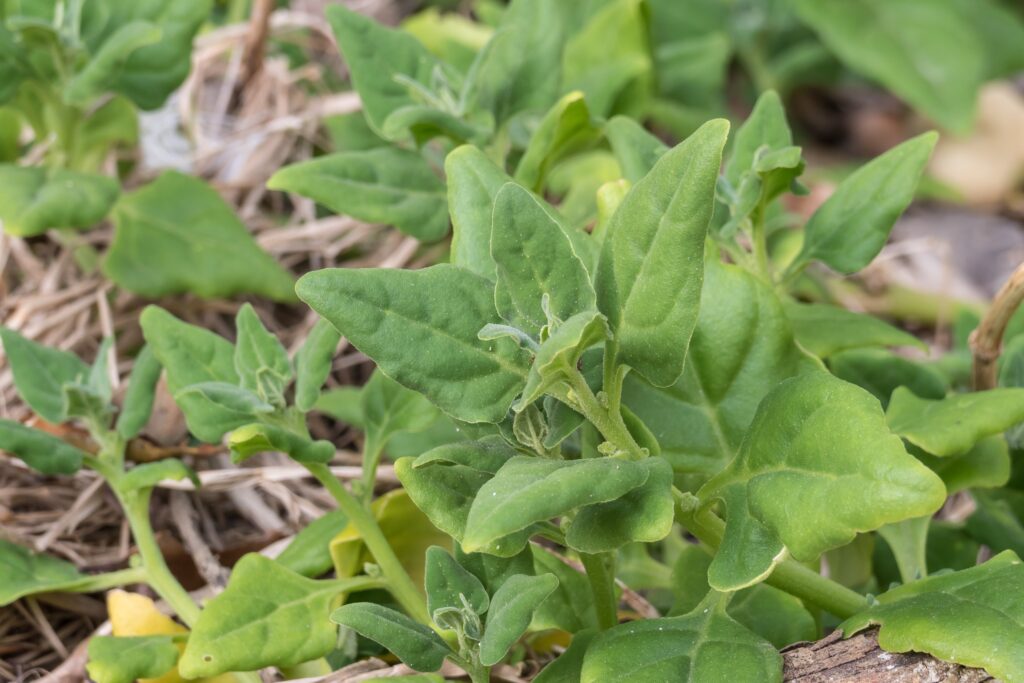
What are its basic care needs?
- Sun: 6 to 8 hours of direct sunlight.
- Soil: Loose, well-draining soil.
- Water: Weekly watering, after the soil’s surface dries out.
- Fertilizer: Yearly application of compost around the plant.
- Special Care: Restrict this plant in a container to prevent spreading. It may be worth checking if it’s allowed in your local area as it is considered invasive in Florida, Hawaii, and California.
Any precautions or notes on growing this vegetable? Harvest New Zealand Spinach leaves once the plant is established, ensuring to cook thoroughly first before eating.
7. Purple Tree Collard (Brassica Oleracea var. viridis)

What are its basic care needs?
- Sun: 6 to 8 hours of direct sunlight.
- Soil: Moist, well-draining soil filled with nutrients.
- Water: Weekly watering, after the soil’s surface dries out.
- Fertilizer: Yearly application of compost around the plant.
- Special Care:
- Due to their large growth, only grow this plant near shade-tolerant plants. Alternatively, just don’t plant them next to smaller plants. Have pity on the little guys, too.
- Prune the plant yearly to maintain its height for easier harvesting, as it can grow up to 8 feet tall!
- Propagate healthy stem cuttings rather than discarding them. Alternatively, you can give them away to fellow gardeners too.
Any precautions or notes on growing this vegetable? Harvest Purple Tree Collard leaves and stems sparingly during the 1st & 2nd year of planting it. But after the 3rd year, you can start picking them all-year round.
8. Roselle (Hibiscus Sabdariffa)
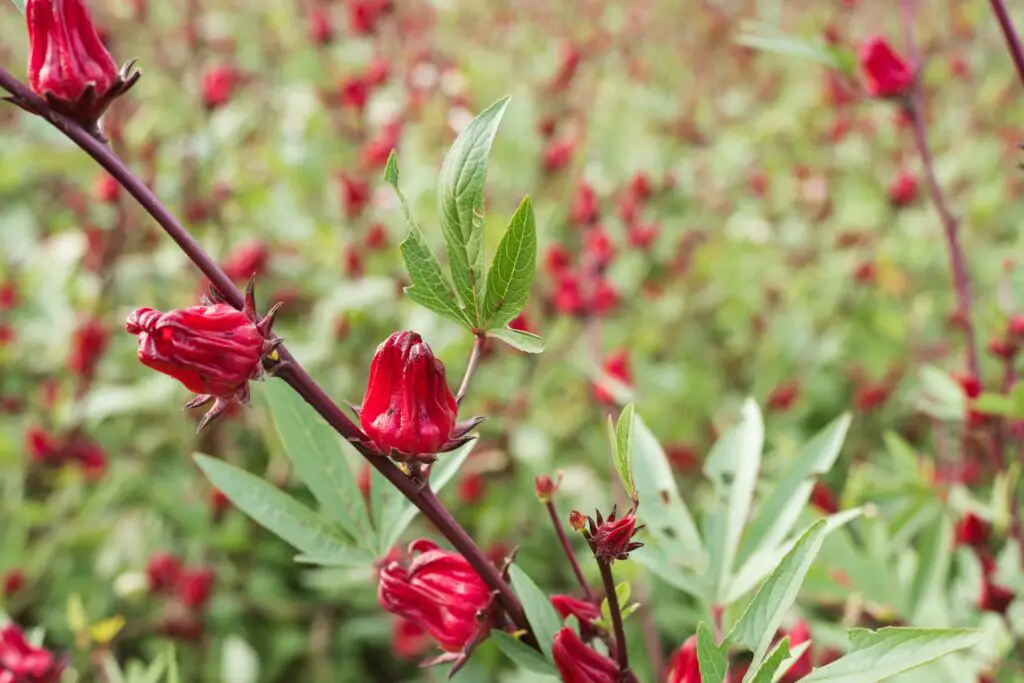
What are its basic care needs?
- Sun: 6 to 8 hours of direct sunlight.
- Soil: Well-draining, sandy or loamy soil.
- Water: Weekly watering, after the soil’s surface dries out.
- Fertilizer: Yearly application of compost around the plant.
- Special Care: None.
Any precautions or notes on growing this vegetable? Harvest Roselle leaves once the plant is established, which can be eaten raw in salads or cooked. It’s worth noting that Roselle is popularly grown for its red, cup-shaped calyx found at the bottom of the flowers. They are often used in drinks or as a replacement for cranberries or rhubarb in pies.
9. Sweet Potato (Ipomoea Batatas)
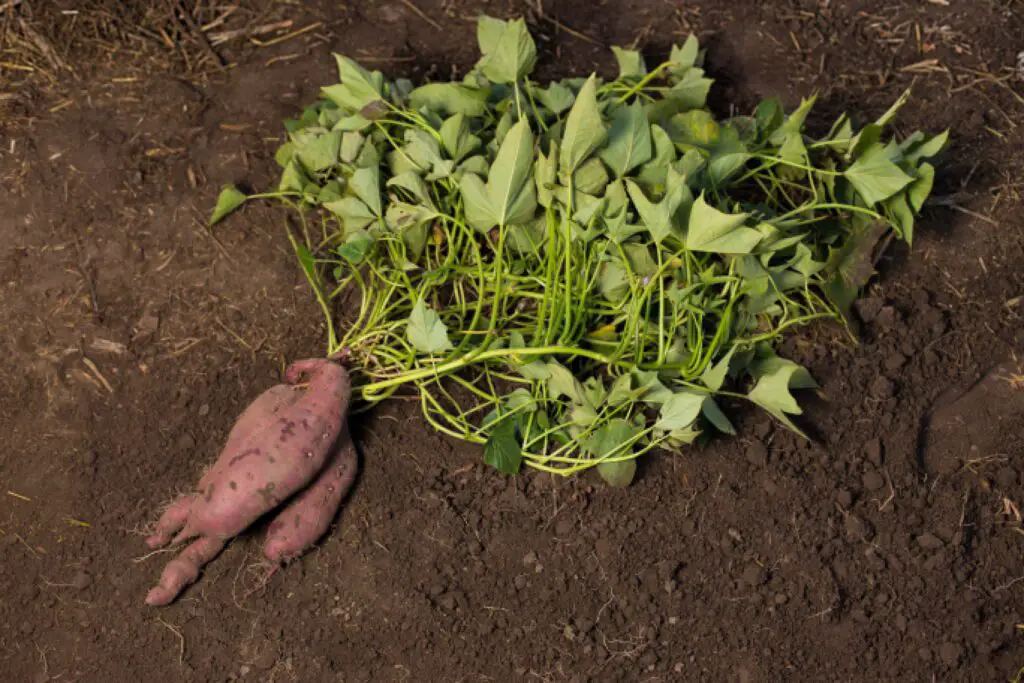
What are its basic care needs?
- Sun: 6 to 8 hours of direct sunlight.
- Soil: Loose, well-draining, slightly acidic soil with pH 5.6 to 6.6.
- Water: Weekly watering, after the soil’s surface dries out. But stop watering completely about a month before harvest.
- Fertilizer: Yearly application of compost around the plant.
- Special Care: Regularly pull out weed on a weekly basis around the plant to prevent nutrient competition.
Any precautions or notes on growing this vegetable? Harvest Sweet Potato tubers after 100 to 110 days after planting, when the leaves start turning yellow. Gently dig them out of the soil then cure them in a warm and dry area for about 2 weeks before using or storing them.
References:
- Buddenhagen, C. (2022). Tetragonia tetragonioides (New Zealand spinach). CABI Compendium, CABI Compendium. https://doi.org/10.1079/cabicompendium.52942
- Claytonia virginica – Plant Finder. (n.d.). Www.missouribotanicalgarden.org. Retrieved December 14, 2022, from https://www.missouribotanicalgarden.org/PlantFinder/PlantFinderDetails.aspx?kempercode=j800
- Claytonia virginica (Common Spring-beauty, Fairy Spud, Spring Beauty, Spring-beauty) | North Carolina Extension Gardener Plant Toolbox. (n.d.). Plants.ces.ncsu.edu. https://plants.ces.ncsu.edu/plants/claytonia-virginica/
- Garlic, Allium sativum. (n.d.). Wisconsin Horticulture. https://hort.extension.wisc.edu/articles/garlic-allium-sativum/
- Murraya koenigii – Plant Finder. (n.d.). Www.missouribotanicalgarden.org. https://www.missouribotanicalgarden.org/PlantFinder/PlantFinderDetails.aspx?kempercode=d441
- Plant database entry for Drumstick Tree (Moringa oleifera) with 12 images and 40 data details. (n.d.). Garden.org. Retrieved December 14, 2022, from https://garden.org/plants/view/113113/Drumstick-Tree-Moringa-oleifera/
- Plant database entry for Purple Tree Collard (Brassica oleracea var. viridis “Richmond’s Pride”) with 3 images and 10 data details. (n.d.). Garden.org. Retrieved December 14, 2022, from https://garden.org/plants/view/780547/Purple-Tree-Collard-Brassica-oleracea-var-viridis-Richmonds-Pride/
- Roselle – University of Florida, Institute of Food and Agricultural Sciences. (n.d.). Gardeningsolutions.ifas.ufl.edu. https://gardeningsolutions.ifas.ufl.edu/plants/edibles/vegetables/roselle.html
- Sweet potato | Diseases and Pests, Description, Uses, Propagation. (n.d.). Plantvillage.psu.edu. https://plantvillage.psu.edu/topics/sweet-potato/infos
- Tree Collards: A Plant for the Lazy Gardener in You. (n.d.). ANR Blogs. https://ucanr.edu/blogs/blogcore/postdetail.cfm?postnum=20042

